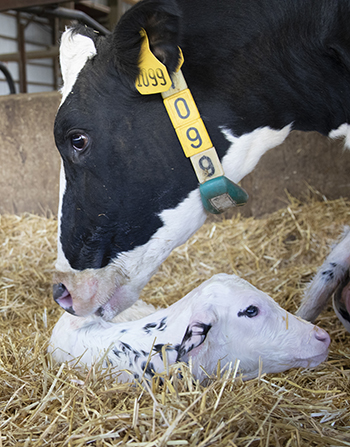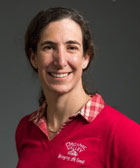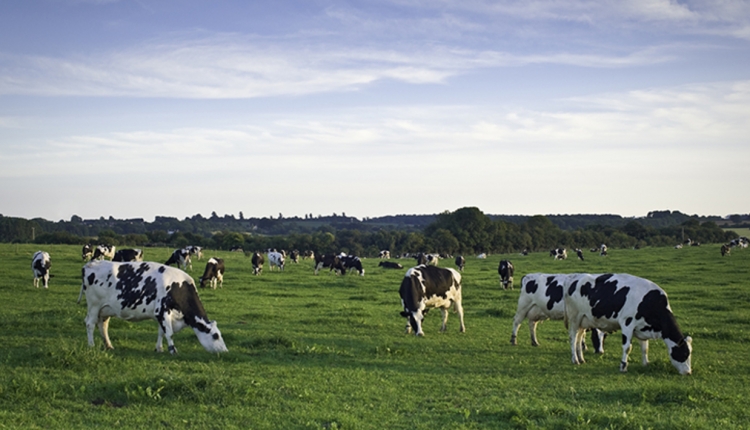
In my current position as a veterinarian working for a dairy cooperative, I often get questions from the general public during farm tours or through social media and our consumer hotline. One of the most common questions I get is, “Why do we separate the calves from their mums?”
These questions invariably come from mothers. For dairy producers, this is so much a part of dairy farming that our simple answer is, “Because that is how it works.” This rarely satisfies those members of the public who are asking the question, though.
The challenge with the cow-calf question is that it is deceptively simple. For all those not in dairy, the obvious answer is that we should just keep calves with their mothers. But for all those in the dairy industry, we realize that if we are not careful, this question may prove to be our Achilles’ heel.
Recognizing this challenge, the Dairy Cattle Welfare Council (DCWC) asked our Consumer and Animal Advocacy Committee to take a deeper look at this question by reviewing the scientific literature on cow-calf separation to provide perspective and, hopefully, guidance. The findings of the committee were presented at the 2019 Dairy Cattle Welfare Symposium in Tampa, Fla., followed by an active discussion among the conference participants.
The finding of the committee was that there was not enough research to draw a definitive guideline for the separation of the calf and the cow. In nature, the early interaction of the cow with the calf stimulates the calf to get up, nurse, start digesting food, and learn to interact. On dairies, we want to take care of the calf and the cow individually.
Research on the maternal bond between the cow and the calf showed that the longer a cow and calf were kept together and the more interaction between the two — including licking, nursing, and vocalizing—the stronger the bond and this resulted in more distress shown by both when the pair were separated. These findings seem to support the current practice of separating calves from cows soon after birth to reduce the anxiety of the separation.
On the other hand, the committee also found research showing significant benefits to keeping calves with cows longer, including a reduction in calfhood diseases and an improvement in social development in calves that were kept with their dams for up to 14 days. The recommendation of the committee was that more research and understanding of the separation was needed to make broad recommendations, and they endorsed a wider discussion across the industry to bring together collective wisdom.
This discussion started at the 2019 Dairy Cattle Welfare Symposium with an insightful conversation between farmers, veterinarians, scientists, and industry advisors. Not surprisingly, some of the best advice from this discussion came from the farmers. In particular, one of the farmers talked about mimicking natural cattle behavior in how he separated cows from calves.
He described how his employees came up with this by seeing that the cow moved the calf to the back of the maternity pen after the first nursing. The cow then went to the feedbunk to eat and the calf went to sleep. The employees found it easier to separate the two by moving the cow from the pen at this point and leaving the calf asleep. As a result, they saw minimal distress from the calf or the cow. It is this sort of practical advice that can come when farmers, farmworkers, vets, and scientists all put their minds together to tackle a problem.
At the upcoming 2021 Virtual Dairy Cattle Welfare Symposium on May 25 to 27, we are planning to further explore the cow-calf question with a joint session that brings together scientists and farmers from around the world. Opening the discussion is Julie Føske Johnsen, talking about European research and experience on cow-calf contact, followed by Nina von Keyserlingk who will bring the North American public and scientific perspective. Lastly, Charles Ellett sharing his experience as a farmer who has taken the leap to keep calves with their dams until weaning and how they have made it work on their operation. Following these talks, we plan to have a round table discussion which will give all the conference participants a chance to share their questions, experience, perspectives, and ideas.
While we don’t expect to find a simple answer to the cow-calf question, we hope to foster a productive conversation to help everyone begin to find ways to answer this question on their farms and in their businesses. For more information on the 2021 Dairy Cattle Welfare Symposium, including registration details, please visit www.dcwcouncil.org.

Meggan Hain, D.V.M., is a veterinarian and animal welfare specialist working for a dairy cooperative in Wisconsin. She is passionate about dairy farming and dairy cattle welfare and is putting that passion into action as the president-elect of the Dairy Cattle Welfare Council.






